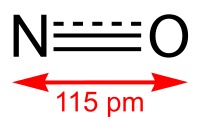
Photo from wikipedia
Preeclampsia (PE) is characterized by systemic maternal endothelial dysfunction. Changes in endothelial reactivity have been reported before the onset of clinical signs of PE, and continuing into the post-partum period.… Click to show full abstract
Preeclampsia (PE) is characterized by systemic maternal endothelial dysfunction. Changes in endothelial reactivity have been reported before the onset of clinical signs of PE, and continuing into the post-partum period. Women who smoke during pregnancy have a 33% reduced risk of developing PE. This reduced risk is hypothesized to be, in part, attributed to carbon monoxide (CO), a by-product of cigarette combustion and a known endogenous vasodilator. Determining the vascular effects of CO in healthy women, may inform how CO can improve endothelial function and have promise as a novel therapeutic for PE. As part of a pilot study to determine the vascular effects of CO, the aim of this study was to measure microvascular vasodilation following low-dose CO inhalation. Non-pregnant women inhaled ambient room air or 250 ppm CO for 24 min during microvascular assessment using laser speckle contrast imaging. Changes in vascular flux were measured in the forearm before, during, and following a three-minute arterial occlusion. CO inhalation increased end-tidal breath CO (EtCO) (9.1 ± 1.9 vs. 1.8 ± 0.7 ppm, p < 0.05) and increased microvascular vasodilation, measured as difference of maximum level/resting level ratio (mean difference 0.476, 95% confidence interval (CI) = 0.149-0.802 vs. 0.118, 95% CI = -0.425-0.662, p < 0.05). Women who inhaled CO had a longer time to half recovery of endothelial function following arterial occlusion, compared to controls (hazard ratio 0.29, 95% CI = 0.10-0.91, p = 0.033). Inhalation of CO moderately increased EtCO and resulted in an increased microvascular response, suggesting that CO may have potential as a therapeutic for PE.
Journal Title: Microvascular research
Year Published: 2019
Link to full text (if available)
Share on Social Media: Sign Up to like & get
recommendations!